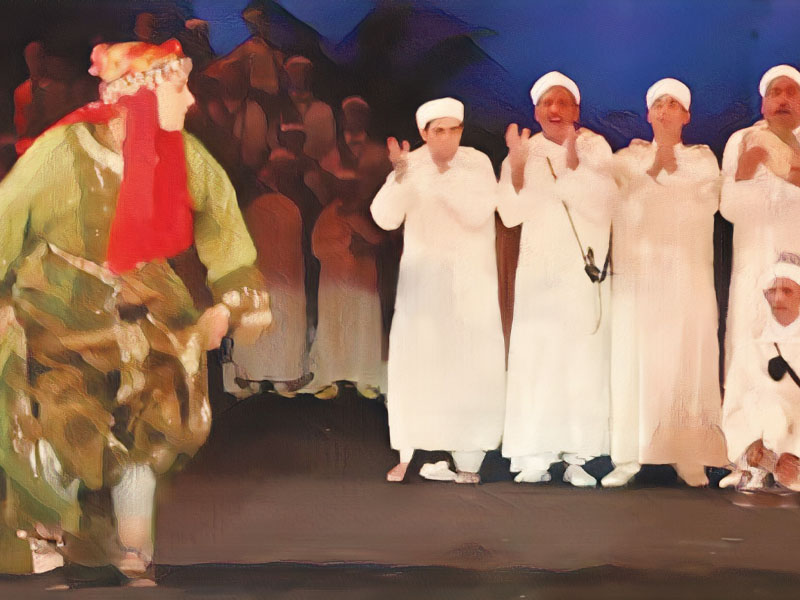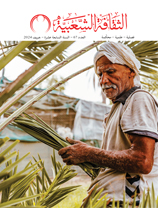Howari dance Ethno-sociological approach
Issue 50

Abdullah Al-Hilali
Researcher in Sociology
Analysis of Folk Culture – Morocco
In cultural festivals or various folkloric celebrations, Moroccan folk dances captivate the viewers’ hearts. The magic embedded these dances is what motivates some researchers to study them and understand their implications.
I have chosen a dance in the Howara region of the Sous Valley in Morocco, based on its choreography uniqueness, the cultural and aesthetic dimensions of the movements of its dancers, and the symbolism of the percussion instruments that accompany it. The dance has several names and can be called the “Laghtah”, “Wa’nasah” or “Howari” dance.
In this paper, I present an analytical model of the dance that combines sociology and ethnography. It takes into account the principle of “non-redundance” emphasized by Emile Benveniste, which requires that two different semiotic formats (dance functionalism and linguistic functionalism) cannot make up for each other and that we do not use multiple formats for one semantic relationship.
I also take into consideration that the artistic reference has an aesthetic function, and that some arts that revolve around a specific subject have a second function, which is the communicative function.
The analysis of the choreography of the dance within its social context led to the following results:
- The dance presents a number of semiotic components that overlap.
- Its semantic significance is achieved when the recipient senses the psychomotor effect and starts moving with the dancers; it is also achieved with the unified movements of all dancers at the climax.
- The suggestive indication of "language" constitutes the central signal that aids in understanding the choreography between dancers.
- The dance presents two roles, the role of the oppressor and the role of the oppressed, represented in body related movements that reflect pain. The special dress that the female dancer wears plays a functional role in projecting and amplifying movements, slowing their diminishing, and limiting the movements of body.
- Movement, rhythm and language combine to enhance the suggestive sign of "punishment".
Finally, I would like to assure that the analysis provided in this paper is relative, and I cannot claim that I decide the semantic dimensions of this dance




































































